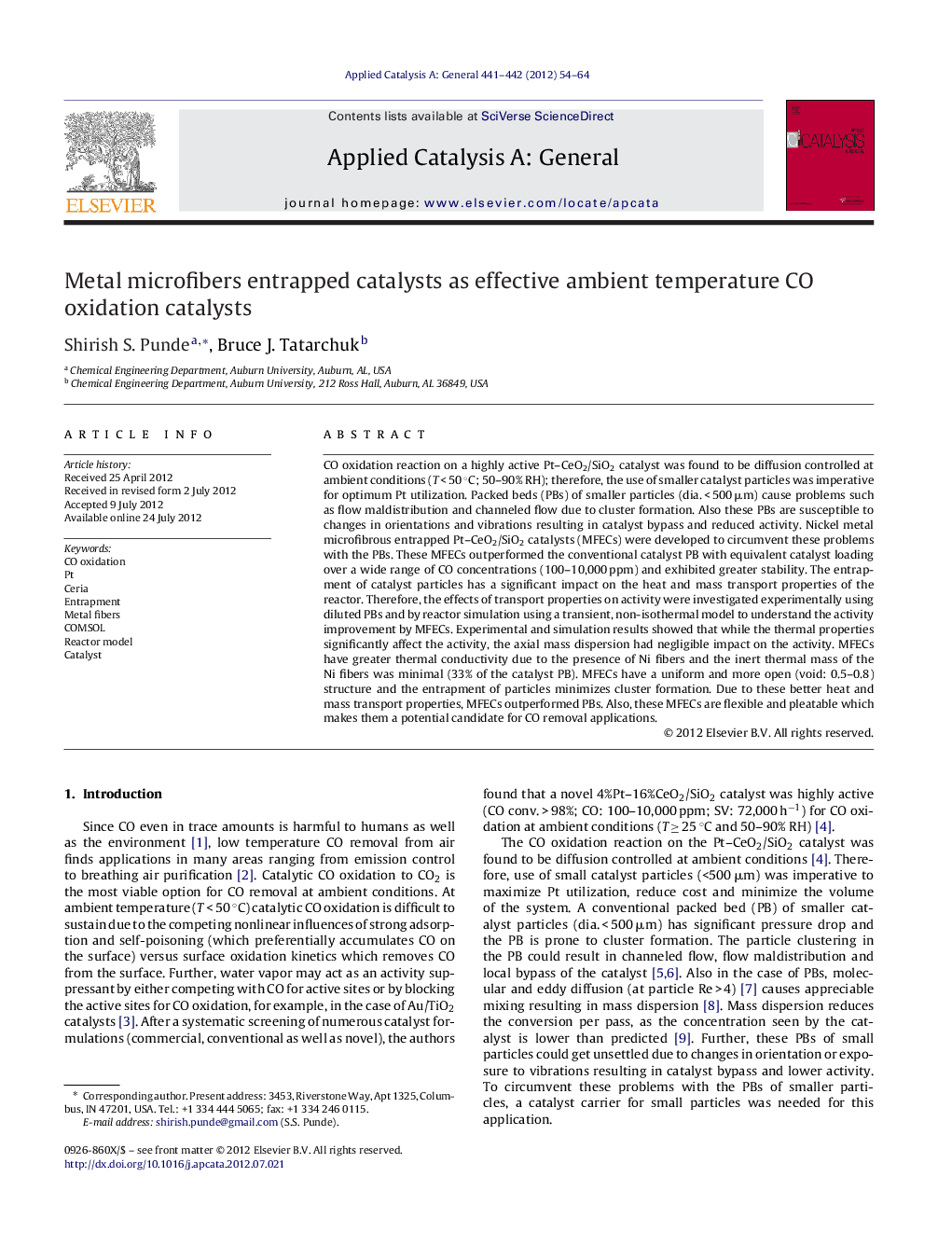| Article ID | Journal | Published Year | Pages | File Type |
|---|---|---|---|---|
| 40773 | Applied Catalysis A: General | 2012 | 11 Pages |
CO oxidation reaction on a highly active Pt–CeO2/SiO2 catalyst was found to be diffusion controlled at ambient conditions (T < 50 °C; 50–90% RH); therefore, the use of smaller catalyst particles was imperative for optimum Pt utilization. Packed beds (PBs) of smaller particles (dia. < 500 μm) cause problems such as flow maldistribution and channeled flow due to cluster formation. Also these PBs are susceptible to changes in orientations and vibrations resulting in catalyst bypass and reduced activity. Nickel metal microfibrous entrapped Pt–CeO2/SiO2 catalysts (MFECs) were developed to circumvent these problems with the PBs. These MFECs outperformed the conventional catalyst PB with equivalent catalyst loading over a wide range of CO concentrations (100–10,000 ppm) and exhibited greater stability. The entrapment of catalyst particles has a significant impact on the heat and mass transport properties of the reactor. Therefore, the effects of transport properties on activity were investigated experimentally using diluted PBs and by reactor simulation using a transient, non-isothermal model to understand the activity improvement by MFECs. Experimental and simulation results showed that while the thermal properties significantly affect the activity, the axial mass dispersion had negligible impact on the activity. MFECs have greater thermal conductivity due to the presence of Ni fibers and the inert thermal mass of the Ni fibers was minimal (33% of the catalyst PB). MFECs have a uniform and more open (void: 0.5–0.8) structure and the entrapment of particles minimizes cluster formation. Due to these better heat and mass transport properties, MFECs outperformed PBs. Also, these MFECs are flexible and pleatable which makes them a potential candidate for CO removal applications.
Graphical abstractFigure optionsDownload full-size imageDownload high-quality image (87 K)Download as PowerPoint slideHighlights► Pt–ceria/silica catalyst entrapment in Ni fibers was investigated for CO oxidation at ambient conditions. ► A 1-D, non-isothermal, transient reactor model was developed and validated against reactor data. ► Effect of heat/mass transport properties on activity was studied by catalyst dilution and by simulations. ► Stability of Ni microfibers entrapped catalysts was studied.
